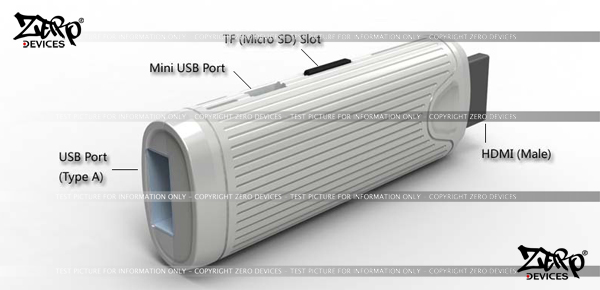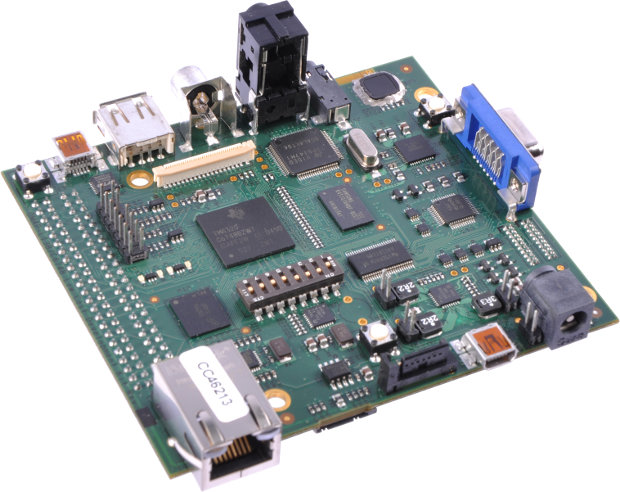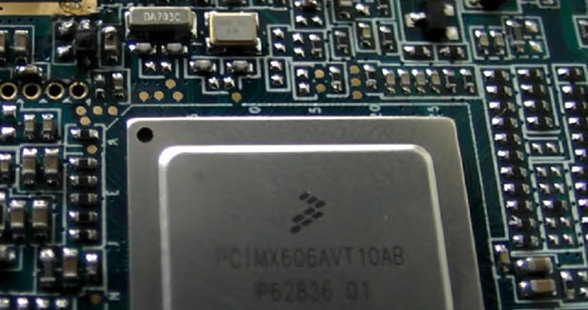Quim Gil, in charge of developers relation at Nokia, announced on Maemo.org, that Nokia is currently looking for experienced Qt developers willing to port or develop apps running on top of Qt 5 before its finally release in August/September 2012 and will provide a Nokia N9 or N950 smartphones (running Meego) to selected developers. The goals of this device program are as follows: Testing Qt 5 itself and providing feedback while it’s alpha/beta. Testing the Qt 5 libraries for the Nokia N9. Developers feedback for port from Qt 4 to Qt 5, whether is was easy, a nightmare… and comments on difficulties experienced, Qt Creator and the documentation. Testing new Qt 5 features such as Qt Quick 2, textures, transitions, graphics / video effects, raw OpenGL ES stuff, post-Mobility APIs, the new Qt WebKit, JSON DB, ongoing R&D on PhoneGap own JQuery based experiments, etc… This new device program has […]
Zero Devices Z900 Android 4.0 HDMI Stick
A reader (Thanks Javier!) tipped me about the Zero Devices Z900, an upcoming Android 4.0 mini PC, by one of the companies providing the MK802 / Z802 mini PC. Here are the unofficial specifications: ARM Processor @ 1Ghz with Mali-400 GPU (AllWinner A10 ?, Wrong guess. It’s Telechips TCC8925) 512 MB RAM 4 GB Flash and microSD slot HDMI video output Wi-Fi 802.11 b/g/n 1x USB 2.0 port and 1x mini USB port (power) OS – Android 4.0 Dimensions – 89 x 32 x 18 mm Weight – 38 grams This little device also support 3D video playback. Availability and pricing are not available yet, but we can expect it to be in the same price range of his little brother (MK802 / Z802) that is around 70 to 80 USD including shipping. Since it has an HDMI male connector, it can be more convenient than the MK802 as you […]
Dell Announces Copper ARM Servers Based on Marvell ARMADA XP SoC
It looks like 2012 will be the year of ARM servers. After previous announcements of ARM servers based on Calxeda and Applied Micro SoC, Dell has just announced its own “Copper” ARM servers powered by Marvell ARMADA XP SoC (MV78460) that allegedly runs Ubuntu Server with a LAMP stack. Dell “Copper” ARM server is composed of 12 sleds with 4 SoC each slotted into a 3U C5000 Chassis. Here are the specs: Form factor 3U chassis 48 independent servers Architecture 1S 1.6GHz, quadcore Marvell Armada XP system on a chip (SoC) 4 discrete server nodes per sled 12 sleds per 3U chassis Memory 1 DIMM slot DDR3 UDIMM VLP, 1333MHz up to 8GB per node Drive bays 1 x 2.5″ SATA per node Hard disk drives 2.5″ SATA (7.2K rpm) Networking 1GB Marvell Ethernet uplink per node (QSGMII) connected to Marvell Integrated L2 Switch (98DX4122) Dell believes that ARM based […]
Open Source Mali 200/400 Drivers (LIMA) Demo on Android Tablet
Luc Verhaegen, the lead developer of LIMA open source project, provided an update at LinuxTag 2012 last week-end. This open-source MALI GPU driver isn’t ready for consumers yet, but the LIMA team has made some progress and showcased an OpenGL ES demos running on a Chinese tablet running Android. Luc said the tablet used for the demo is the same hardware as the Spark KDE/Vivaldi tablet, so the video demo below must be running on an AMLogic 8726-M processor with a Mali 400 GPU. The drivers already (partially) work on both Mali-200 and Mali-400 GPUs. The fragment shader instructions set is fully known and they have disassembler and assembler fully implement, but they still need to work on the compiler. The vertex shader instruction set is 80% known, they have a simple shader disassembler and are working on the assembler. You can also watch the 40 minute presentation at LinuxTag […]
TI TMS320C6748 DSP Low Cost Development Kit for Fingerprint Recognition and Face Detection
Texas Instruments recently introduced the TMS320C6748 DSP development kit (LCDK) for real-time analytics applications such as fingerprint recognition and face detection, as well as other digital signal processing applications, such as audio and communications. The C6748 DSP development kit comes pre-loaded with TI C6748 SYS/BIOS Software Development Kit (SDK) which includes: SYS/BIOS real-time kernel C6748 StarterWare software package (lightweight, operating-system-independent software libraries and utilities) Sample apps for fingerprint recognition and face detection Code Generation Tools DSP core performance benchmarks that show the real-time processing power of TI’s C674x DSPs. The C6748 DSP development kit also includes Code Composer Studio IDE v5.1. Several standard interfaces for connectivity and storage are available in the board to allow audio, video and other signals. Expansion headers also allow developers to add display and user interface technology, such as camera boards and LCD screens. The board schematics and design files are supposedly available for download, […]
YOOE F4 – Freescale i.MX6 Quad Core Cortex A9 Android 4.0 Tablet
Freescale i.MX6 processors will finally be available in some devices very soon, as YOOE is currently finalizing the development of YOOE F4 (Model: RT-E597A), a 9.7″ tablet powered by Freescale i.MX6 Quad with 1 GB of RAM and running Android 4.0.4. Samples will be available in June and mass-production is expected to start in July. The company will sell this tablet for 220 to 250 USD retail. Charbax is currently in Shenzhen and a shot a video showing the tablet at the company offices, and performance seems to be very good. YOOE is the company that manufactures one of the first low cost Allwinner A13 Tablets. Jean-Luc Aufranc (CNXSoft)Jean-Luc started CNX Software in 2010 as a part-time endeavor, before quitting his job as a software engineering manager, and starting to write daily news, and reviews full time later in 2011. www.cnx-software.com
Rikomagic MK802 Android mini PC Unboxing and Review
Youtube user Zaatour36 has received the low cost MK802 Android 4.0 mini-PC based on AllWinner A10 processor and has uploaded 2 videos. The first video gives an overview of the device connectors and show the different cables (mini HDMI to HDMI, USB) and adapters (microUSB to USB and power) that are provided with the MK802. The second video is more like a review, and shows how to connect the device, go to the setup menu to change the settings and language and play around with the different Android applications. You’ll also be able to get a feeling of the performance. Jean-Luc Aufranc (CNXSoft)Jean-Luc started CNX Software in 2010 as a part-time endeavor, before quitting his job as a software engineering manager, and starting to write daily news, and reviews full time later in 2011. www.cnx-software.com
$3.45 Microchip PIC32 Development Platform Microstick II
MIPS and Microchip organize a promotion on a MIPS PIC32 MCU development Kit. The Microstick II delivers a development hardware platform for Microchips MIPS-based 32-bit microcontrollers. It’s USB-powered and includes an on-board debugger/programmer, a DUT socket for easy device swapping, a user LED and reset button. Key features: Integrated USB programmer / debugger – No external debugger required USB Powered – Ease of use, No external power required MPLAB support. DUT Socket – Flexible, Easy device replacement 0.025” Pin headers – Enables plug-in to Breadboard with room for jumper wires Easy access to all device signals for probing Small size – Smaller than a stick of gum at 20 x76mm – Easily Portable On board User LED and Reset Switch Free demo code Microstick II supports all 3.3V PIC24FJ, PIC24H, dsPIC33, and PIC32 SPDIP packaged devices which are included in the kit. Microkit II normally costs 34.95 USD, but is […]









